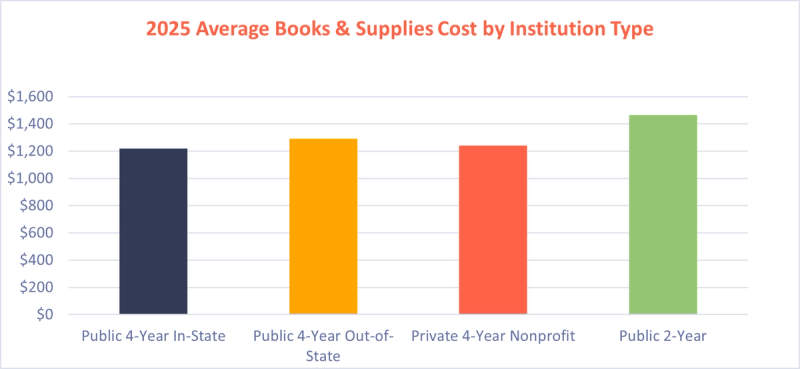The cost of textbooks and supplies
The College Board estimated that the average annual cost for books and supplies at a four-year public college in the United States was around $1,240.
Why Do College Textbooks Cost So Much in 2025?
Textbook prices have risen 1,000% since 1978, outpacing inflation by a mile. Here's why your syllabus feels like a luxury shopping list:
- High Production Costs: Producing textbooks, especially those with color illustrations, graphs, and other visual aids, can be expensive. Additionally, textbooks often require extensive research, development, and editing to ensure accuracy and relevance.
- Tiny Market, Big Markups: Each book targets niche courses, so publishers charge premium to break even.
- New Editions Every Year: Minimal updates force "latest edition" buys, killing the used market.
- Bundling Traps: Access codes for online tools expire fast, blocking resales.
- Publisher Monopoly: A handful of giants control 80% of the market, stifling competition.
- Opaque Pricing: Hidden fees make it hard to shop smart.
- Custom Prints: Prof-required tweaks add 20-30% to base prices.
- Digital Lag: E-books save money, but not all profs go digital yet.

10 Proven Ways to Score Cheap Textbooks in 2025:
Finding affordable textbooks can help you save money during your time in college. Here are some tips on how to get cheap textbooks:
Rent Instead of Buy: Platforms like Chegg or your campus store offer rentals for 40-60% less. Return by semester's end—no resale hassle.
- Hunt for Used Copies: eBay, Amazon, or student swaps slash prices by 50%. Search "used [book title] 2025 edition."
- Shop Online Marketplaces: Compare Amazon, BookFinder, or AbeBooks—save $200+ per book on average.
- Go Digital with E-Books: Kindle or VitalSource versions cost 30-50% less and fit your tablet.
- Tap Library Reserves: Borrow for free (in-library use) or via interlibrary loans—zero cost!
- Snag International Editions: Often 60% cheaper, with identical core content (more on this below).
- Ask About Older Editions: Core concepts rarely change—prof approval can save 70%.
- Join Campus Exchanges: Facebook Groups or apps like BookSwap connect students directly.
- Embrace Open Educational Resources (OER): Free digital texts from sites like OpenStax—used in 30% of courses now.
- Stack Student Discounts: Verify .edu for 10-20% off at retailers like Target or Apple Books.
By planning ahead (syllabus drops early!), you'll dodge impulse buys. Students using these tips report averaging under $400/year on materials.
International Editions vs. U.S. Editions: Side-by-Side Comparison
Tempted by that $50 international copy? It's a steal if it fits your needs. Both deliver the same knowledge, but here's a quick table to weigh pros/cons:
| Feature | U.S. Edition | International Edition |
| Price | $150–$300 | $50–$150 (40-70% savings) |
| Cover & Design | Premium, colorful branding | Simpler, region-specific artwork |
| Paper Quality | High-gloss, durable | Standard, cost-effective |
| Page Numbering | Standard U.S. layout | May differ, check prof references |
| Binding | Sturdy hardcover/softcover | Softer, less durable for heavy use |
| Content | Full exercises, U.S.-focused examples | Identical core; minor problem variations |
| Availability | Everywhere, official | Online gray markets; import restrictions |
| Legal Notes | Fully authorized | OK for personal use, but not resellable in U.S. |
Final Thoughts: Take Control of Your Textbook Budget Today
In 2025, textbook costs aren't going away, but with smart strategies, you can reclaim hundreds (or thousands) for fun stuff like that mini-fridge upgrade. Start by auditing your syllabus and testing one tip this semester, what's your first move?
Explore Scholarships to Cover More Costs | Search Colleges by Major